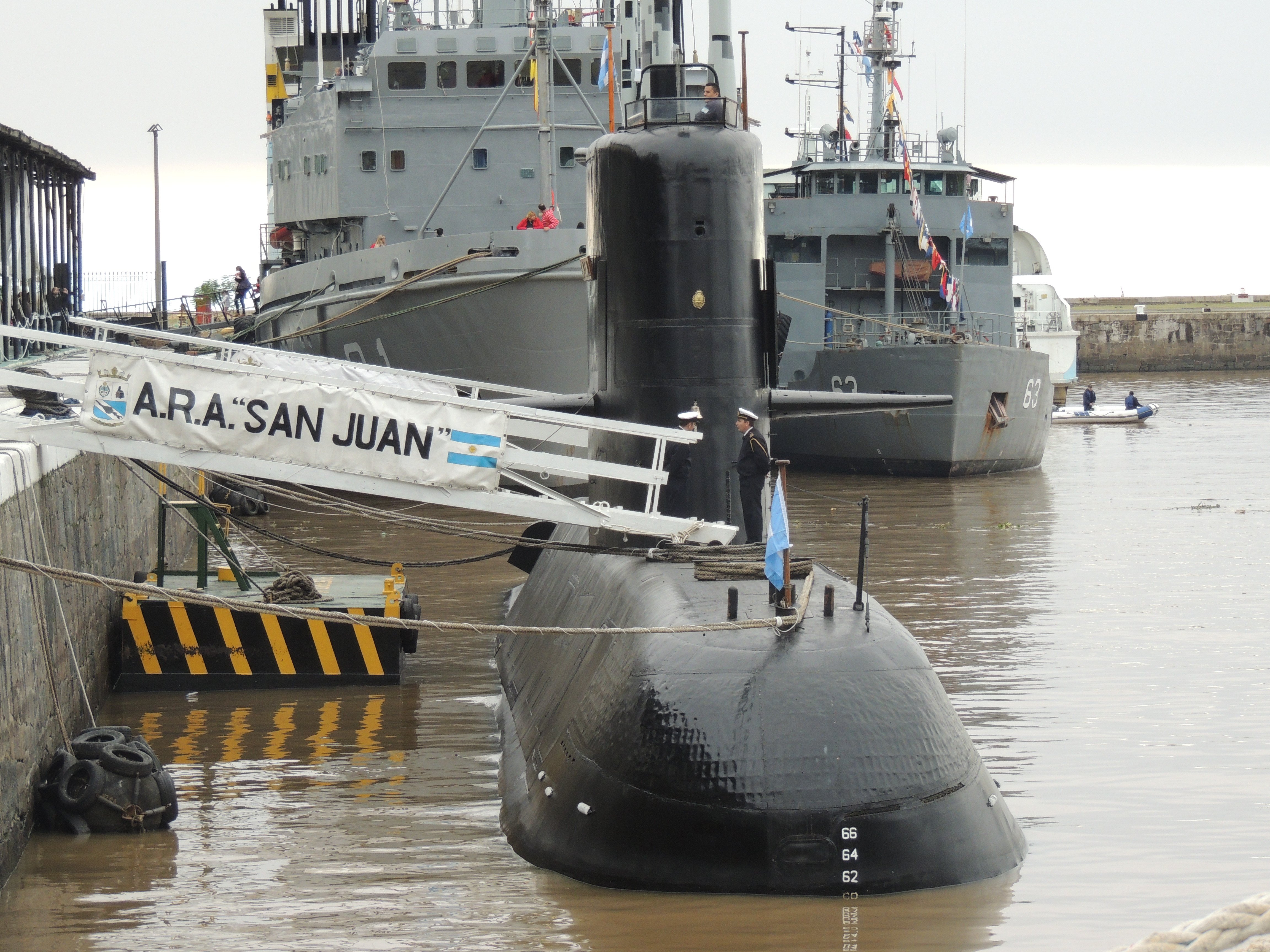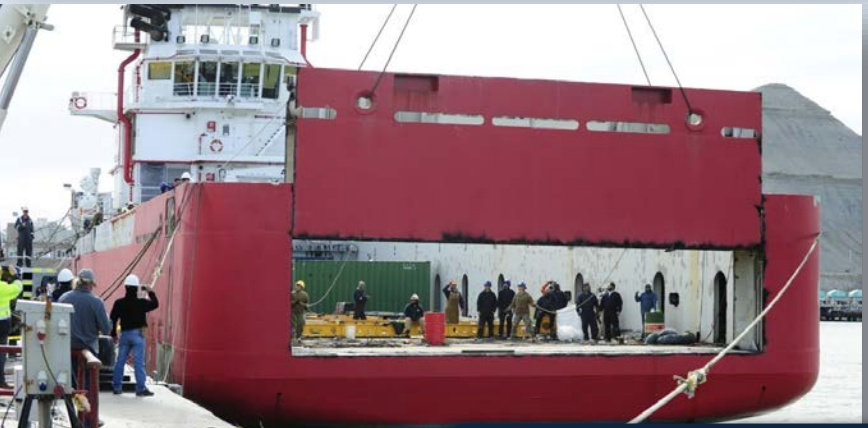
NATIONAL HARBOR, Md. – Executing a submarine rescue is a race against time to reach a trapped crew before a dwindling oxygen supply runs out, and when the most recent request came for help, the U.S. Navy found mobilizing personnel and equipment took too long.
On Nov. 15, 2017, the Argentine Navy lost contact with its submarine ARA San Juan (S-42). Two days later, the Argentinians asked the U.S. Navy for help, and the San Diego-based Submarine Escape and Rescue team quickly mobilized, said Capt. Robert Wolf, the team’s program manager, speaking at the 2019 Sea-Air-Space expo.
The team didn’t know they were already too late arriving in Argentina – searchers now believe San Juan’s crew of 44 sailors likely died shortly after their last communication on Nov. 15, 2017 – but Wolf said his team does know their mobilizing process hit some wrinkles they had to iron out.
“We had some issues with the airlift,” Wolf said. “Definitely the mobilization takes time, and it got us to go reevaluate what we use.”
Texas-based underwater mapping firm Ocean Infinity found San Juan’s wreckage in November 2018, a year after the sub last contacted the Argentine Navy. The wreck was located about 6,200 feet below the surface, where the undersea continental shelf drops off. Had the sub sunk a few miles closer to land, Wolf thinks they would’ve had a decent chance at mounting a rescue mission.
The rescue team relies on U.S. Transportation Command to help with moving equipment or uses charter planes and ship. When the San Juan rescue request was made, Wolf said the immediate transport need came as a shock to TRANSCOM.
“I need as many C-5 (Galaxy), C-17 (Globemaster) you can come up with,” Wolf recalled telling TRANSCOM officials. “That was a bit of a surprise.”
The rescue team needed 43 hours to get the first of eight air-transports off the ground, Wolf said. The final airlift left 120 hours after Argentina requested help. In total, 365 tons of equipment was flown to Argentina.
“We had lost some of the connective tissue with TRANSCOM,” Wolf said. “Most of our operations, most of our exercises had been using commercial airlift. This is not the kind of thing you want to build connective tissue with when the flag goes up.”

Once in Argentina, Wolf said the team needed nearly four days to load its equipment on a locally owned chartered ship. About three days were spent cutting stern bulkhead off the ship, Wolf said, to enable the rescue team’s equipment to be installed. Loading their gear took about 12 hours.
In 2018, after the U.S. Navy search for San Juan ended, Wolf said there was a recognition among the team they needed to rethink some of their processes. During a rescue event where every minute counts, Wolf said it took far too long to mobilize.
The Navy rescue team conducted a full end-to-end rescue exercise in Alaska last year, to apply some of the lessons learned from the San Juan rescue, Wolf said. The team transported their entire kit to Alaska and performed a rescue exercise with USS Texas (SSN-775).
For the Texas rescue exercise, Wolf said the team took about 38 hours to mobile. TRANSCOM wasn’t available to help, so all the gear was trucked to Alaska from San Diego.
“38 hours to mobilize, we probably can do a lot better than that,” Wolf said.
Longer-term, Wolf would like to see some improvements made to help crews survive longer underwater. An autonomous rescue beacon would help. With San Juan, the crew was unable to activate any rescue beacon, which made finding the sub more difficult, Wolf said.
“The mobilization, for our problem, we really need something that can get there in hours, not days or weeks,” Wolf said.





